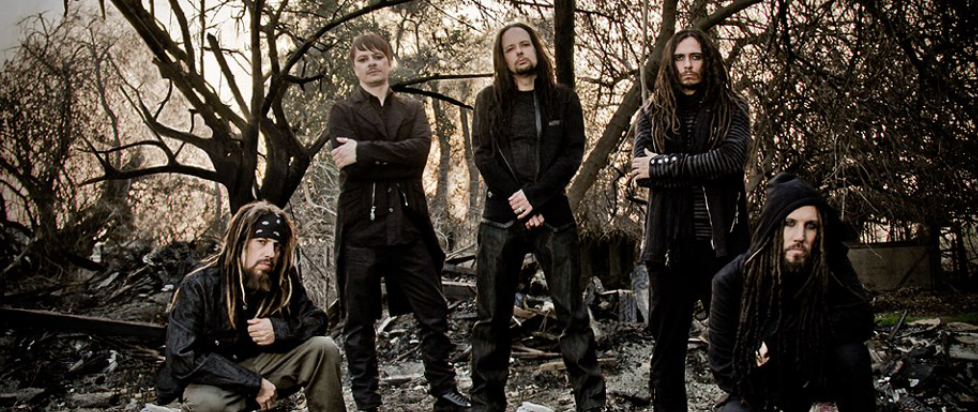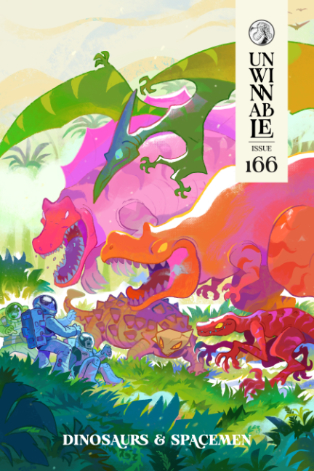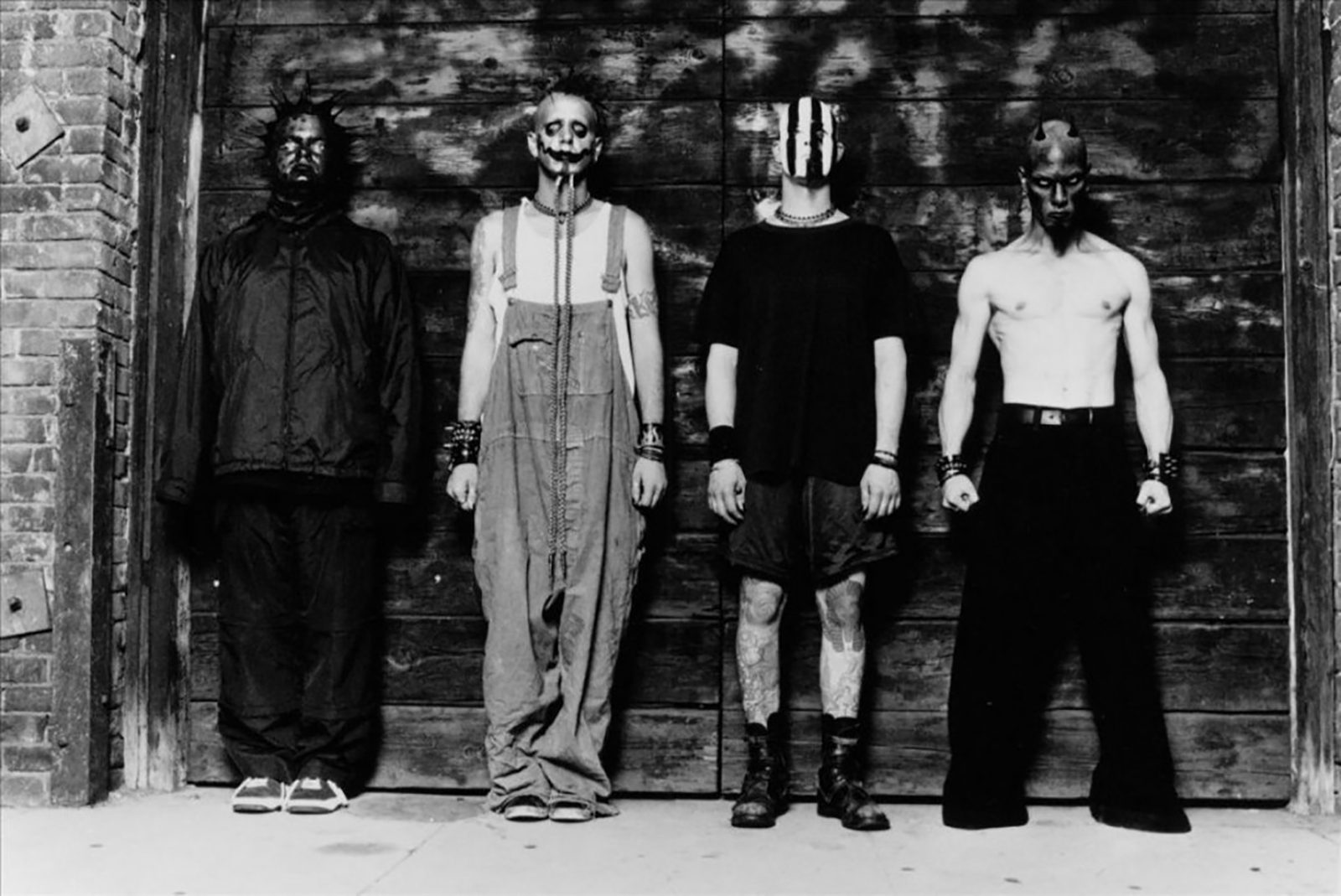
Nu-Metal Might Be Good, Actually?

This column is a reprint from Unwinnable Monthly #166. If you like what you see, grab the magazine for less than ten dollars, or subscribe and get all future magazines for half price.
———
Ruminations on the power of the riff.
———
30 seconds after I put The Dillinger Escape Plan’s Calculating Infinity into my CD player, nu-metal was dead to me. That’s around the point on opening track “Sugar Coated Sour” where guitarist Ben Weinman launches into a shredding solo that infuses free jazz into the band’s blend of hardcore, death metal and math rock. By the time the track cleared its 2:24 runtime, my expectations for heavy music had been permanently reset. I’d been leaning away from my Korn and Mudvayne albums more and more, and that was the final nail in that particular coffin.
It wasn’t just the band’s technical chops that turned them into an obsession. They had swagger and a take-no-shit attitude but without the meatheaded tough guy posturing of the more ignorant ends of hardcore and metal. Tales of unhinged live shows (which, by the time the band called it quits in 2017, had left Weinman with a laundry list of performance-related injuries) were proven accurate when I was able to see them in my senior year of high school. There were no fire breathing antics nor wild fights or crumbling ceilings, but the sheer intensity they brought to a packed crowd in a 200-capacity room remains almost unmatched by anyone else I’ve seen.
Back in the early 2000s, I wasn’t alone in my search for heavy music that went beyond nu-metal’s tired cliches of simplistic riffing and directionless angst. Guitar magazines started hailing “screamo” (a label worthy of a column unto itself) as the future, and by the mid-2000s, nu-metal had become almost completely passe. Whether or not nu metal ever actually died out is a matter of subjective opinion, but its cultural significance had mostly dissipated.

Everything comes back around eventually, but nu-metal, I thought, was almost certainly destined to stay gone. It felt so much like a product of its time that there could be no way it’d age well, and unlike something such as, say, hair metal, it couldn’t even coast on being fun. As file sharing (and later streaming) made it easier to access more music, kids looking for an outlet had less need to rely on whatever heavy bands were readily accessible through the radio or mainstream rock press. Nu-metal seemed like an improbable genre borne out of a specific set of circumstances that could never come together again and it didn’t seem like anything that’d ever retain much retro appeal.
If hearing The Dillinger Escape Plan for the first time confirmed my suspicion that nu-metal sucked and there was better stuff out there, seeing a cover band playing Korn songs at a VFW bar a couple summers ago also disproved my theory that it was dead. It wasn’t the fact that bands like Korn still had an audience that came as a shock, but the fact that a cover band was playing those songs in a VFW bar of all places was a sign that the genre had essentially entered its classic rock phase. Metalcore (using that term as loosely as possible) didn’t kill nu-metal any more than grunge killed hair metal.
I don’t remember exactly what I said to a friend I was with at the bar that night, but it was something to the effect that this band was beyond embarrassing. That there should have been no way grown ass adults would show up at a dive bar with seven-string guitars and unironically play “Falling Away From Me” in a fucking VFW. Read the room!

My friend responded (correctly) that there was a judgmental tone to what I was saying that probably wasn’t entirely fair (and in a lot of ways was absolutely hypocritical). My wife and I had just been talking about how we spent the afternoon driving around town blasting System of a Down and remembering how some (emphasis on some) of that band’s classics still held up. So, why the hell shouldn’t a cover band play Korn? No one was going to argue that they were good per se, nor that it didn’t feel like a joke. But that wasn’t the point. The point was I had no place trying to put myself on a pedestal above them when I had no real grounds to do so.
It isn’t just old heads who can’t let go that are carrying the nu-metal torch. Rather, there’s been several recent waves of bands borrowing influence from nu-metal, free from the stigma that had long surrounded the much-maligned genre. Code Orange introduced some light nu-metal influences on their second record I Am King in 2014 and they’ve responded to criticism by leaning into those influences even harder on subsequent records. Vein.fm’s 2018 debut full-length Errorzone boldly blended elements of the same sort of chaos that the Dillinger Escape Plan trailblazed with overt nu metal influences. Neither is an anomaly either in the way they mix nu-metal with metallic hardcore; if ex-nu-metal kids in the early 2000s left the genre’s baggage behind for hardcore, it seems like hardcore kids today don’t view it with the same stigma.

Nu-metal’s low-key longevity shouldn’t be that hard to understand. Relative to other forms of metal, it generally has a low barrier for entry in terms of technical skill, making it easily accessible both as a musician and as a listener for younger kids. While the genre became bloated and derivative, at its peak, it prized innovation and pushing the boundaries of what guitars could do through lowered tunings and effects pedals. Not all nu-metal bands were as intellectually braindead as the genre’s stereotypes. Mudvayne’s 2000 debut L.D. 50 was heavily inspired by 2001: A Space Odyssey, the Deftones Chino Moreno has always been a bit more poetic than, say, Fred Durst, and System of a Down’s debut record might have been the first album I ever bought with explanations for some of its explicitly political lyrics.

I still love the Deftones and I can admit System of a Down are still fun, so who am I, really, to judge anyone for playing Korn covers? Before I heard Calculating Infinity, L.D. 50 was my personal high-water mark for boundary-pushing heavy music. Its relatively progressive song structures and sci-fi themes stood out from most of the rest of their peers back in 2000. I’d mostly forgotten about them until I saw they’re now playing their first headline tour in 14 years, and contrary to what I would have once assumed would be the case, they aren’t hitting the state fair circuit and nor are they probably playing exclusively to dudes over 40. And after revisiting L.D. 50 for the first time since high school, I’m not sure I’d call it good but its aged better than I would have expected too. I might have thought I was done with nu-metal, but nu-metal might not be done with me yet.
———
Ben Sailer is a writer based out of Fargo, ND, where he survives the cold with his wife and dog. His writing also regularly appears in New Noise Magazine.




